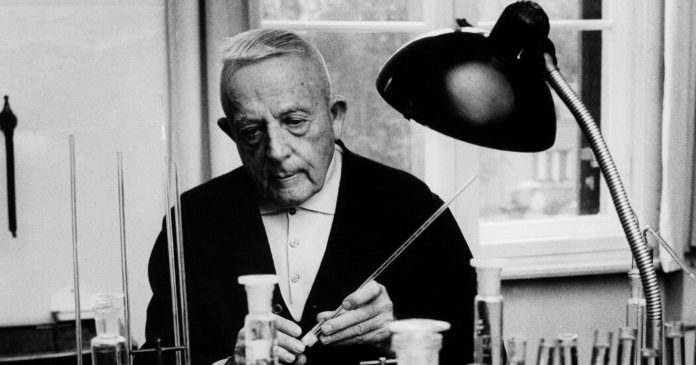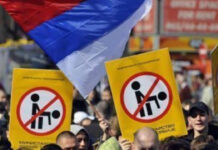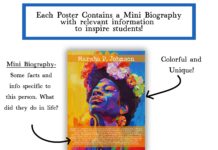
The first two-thirds of “Ravenous” are primarily concerned with questions about Warburg’s life and work: Out of more than 100 scientists from the Kaiser Wilhelm era who met the Nazi definition of being Jewish in 1933, why was it Warburg alone who remained alive and working in Germany by the time the Nazis were finally defeated? And why was his groundbreaking research on cancer metabolism all but forgotten by the end of the 20th century?
Apple covers everything from Hitler’s obsessive preoccupation with cancer to how the German Empire’s transformation into an industrial powerhouse led to a Romanticism-fueled movement that emphasized both environmental and racial purity. The fact that Apple can make these stories, many of which have been told before, feel so immediate is a testament to his canny knack for choosing apposite details.
When he attempts to unravel the conundrums at the center of Warburg’s life, however, he is hamstrung by a dearth of primary sources: The only personal reflections of Warburg’s that Apple quotes — and perhaps the only instances of Warburg ever recording his private thoughts — come from a few short diary entries scribbled on the back of one of his lab notebooks in the final weeks of the war. Apple relies as a result on the diaries of Warburg’s sister, Lotte, which were published in German after her death, and a cascade of speculative conditionals to describe how Warburg “would have,” “must have” or “likely” felt.
The Otto Warburg who emerges from this pastiche is someone who today would be described as a toxic personality: petty and self-centered, obsessed with real and imagined slights, and always convinced of his own brilliance. Those qualities go a long way toward explaining why Warburg’s work on cancer was neglected for so long: His insights about fermentation were often obscured by his insistence, long after evidence had proved him wrong, that cancer cells fermented glucose because they were unable to use oxygen.
But Warburg’s unpleasant personality does not explain why the Third Reich tolerated him. It’s not because he fell into line: Warburg banned the Nazi flag and Nazi salute from his institute and had no Nazis on its staff. Apple attempts to answer this question with allusions to some dark evil, returning again and again (and again) to the idea that Warburg was a “true Faust,” someone so “ravenous for knowledge and power” that he would do anything, including sell his soul to the devil, to achieve “full mastery over life.” But it’s never clear what, precisely, that is supposed to mean.
In the end, Warburg’s biggest sin seems to have been that he not only remained in Germany but survived. Apple ends the first chapter detailing Warburg’s life after the war with an anecdote about a dinner party in America during a 1949 trip that he hoped would result in employment. The greatest obstacle to achieving this goal, Apple writes, “might have finally dawned on Warburg” when the wife of a Caltech professor asked him why he’d remained in Germany “when the Nazis were doing such bad things.”
The scene then played out: “‘I wanted to protect my co-workers,’ Warburg lied. ‘What could I have done?’ The woman had an idea: ‘You could have committed suicide!’ Warburg and the other dinner guests sat stunned. Someone had finally informed the Emperor of Dahlem of his missing clothes.”








